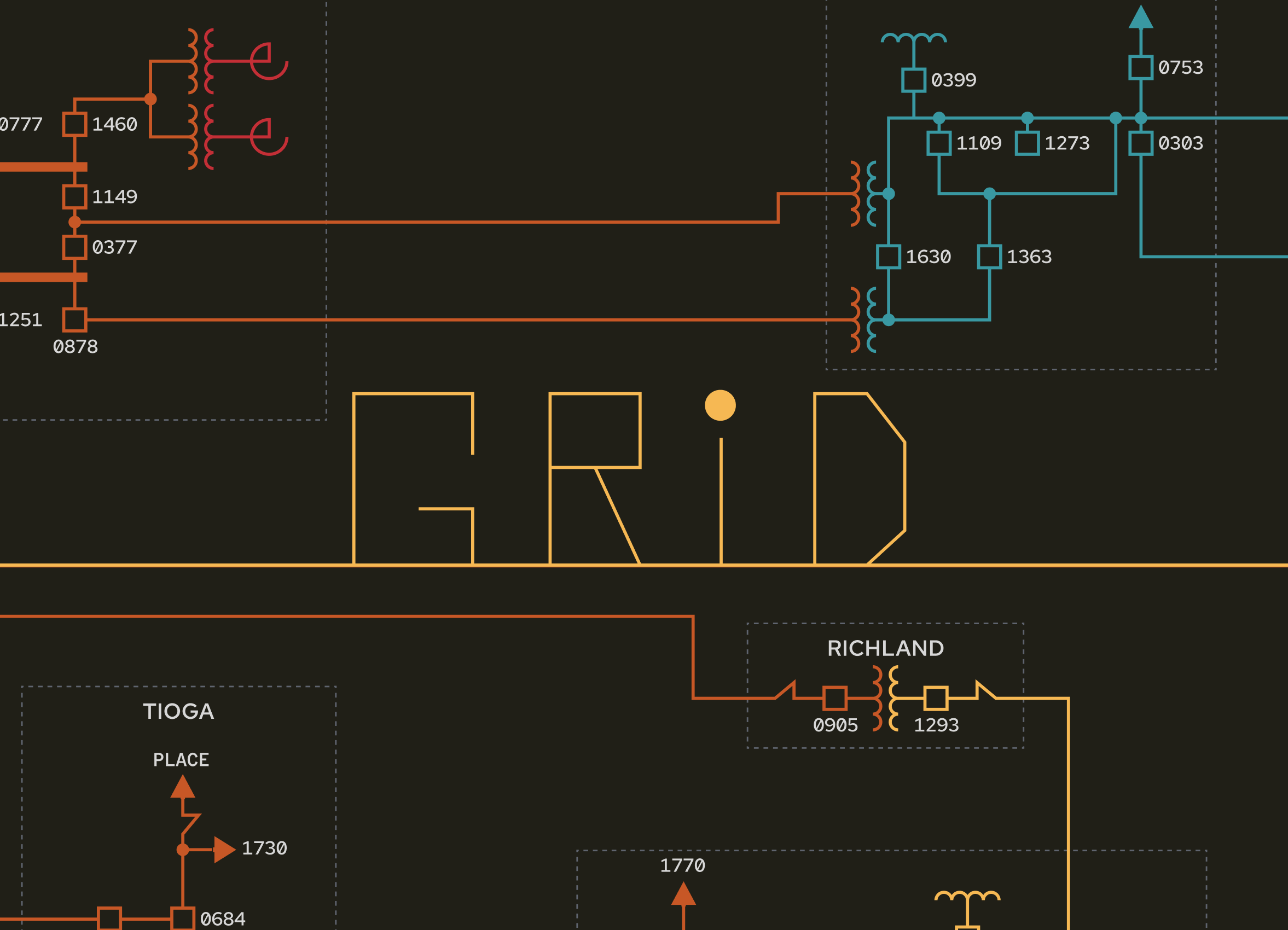
When modeling a large electrical transmission grid one thing that’s hard to reason about is how the elements of the grid will change over time. When planning projects five years out or longer, you need the ability to see what the power grid will (probably*) look like in that future state.
*No plan is set in stone, so having the ability to filter active, approved, and proposed work is vital.
Static approaches to dynamic problems
Many electrical engineers and modelers rely on static snapshots of the grid at specific intervals, called base cases. These are usually generated annually by a regional transmission organization (RTO) and they don’t include project work that hasn’t been officially approved.
To give themselves a head start on modeling future topology (the arrangement and connection of lines and substations), many teams will create additional cases with other planned projects layered on top of the official base case. This process still requires the building of yet another static snapshot that applies changes to the model using a database of project files, opening that new case in some modeling software, and navigating to the location you’re interested in. Adding new projects means building new static cases and repeating the process endlessly.
Bringing power grid software into a new era
What if there was a different way? What if your future projects and your power grid model coexisted in the same tool? Instead of building new cases every time you model a new change, what if you could just jump to a different point in time in the model, see how the topology will have changed by then, and add some new changes at that point in the timeline?
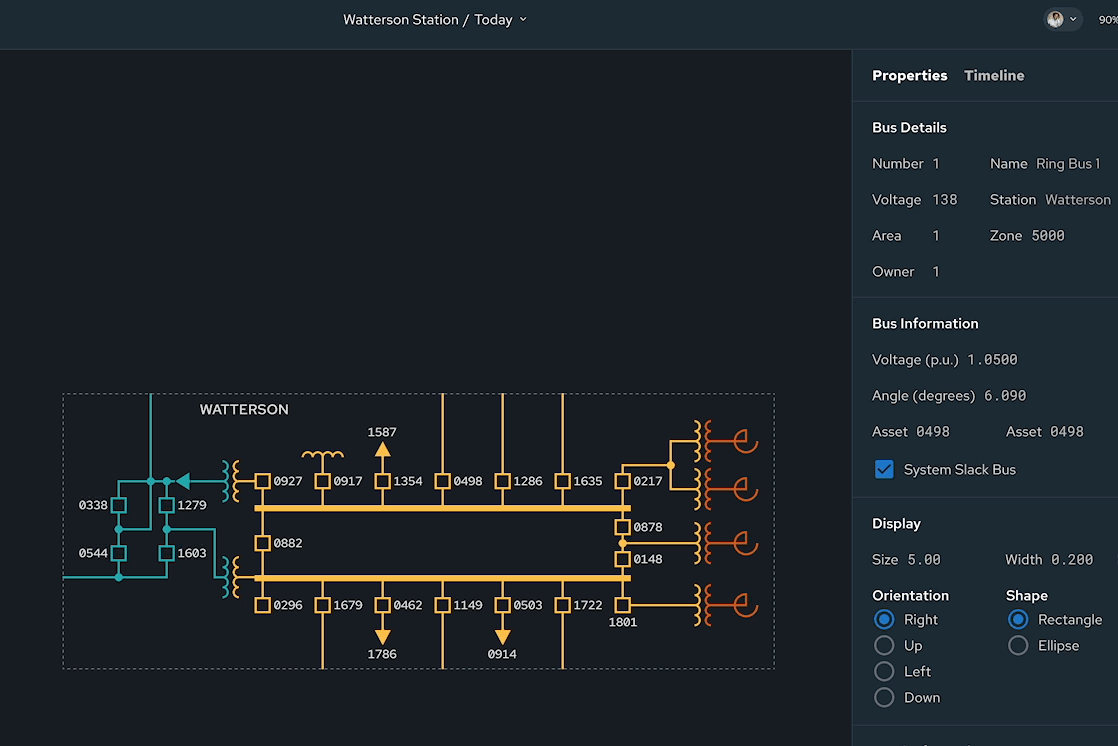
Using the expected energization dates of various projects, you could create a dynamic model that morphs in real time as you scrub through the timeline. If one project depends on another one having already been completed, then you would get immediate visual feedback if you tried to adjust its date to a time before that other equipment will be there.
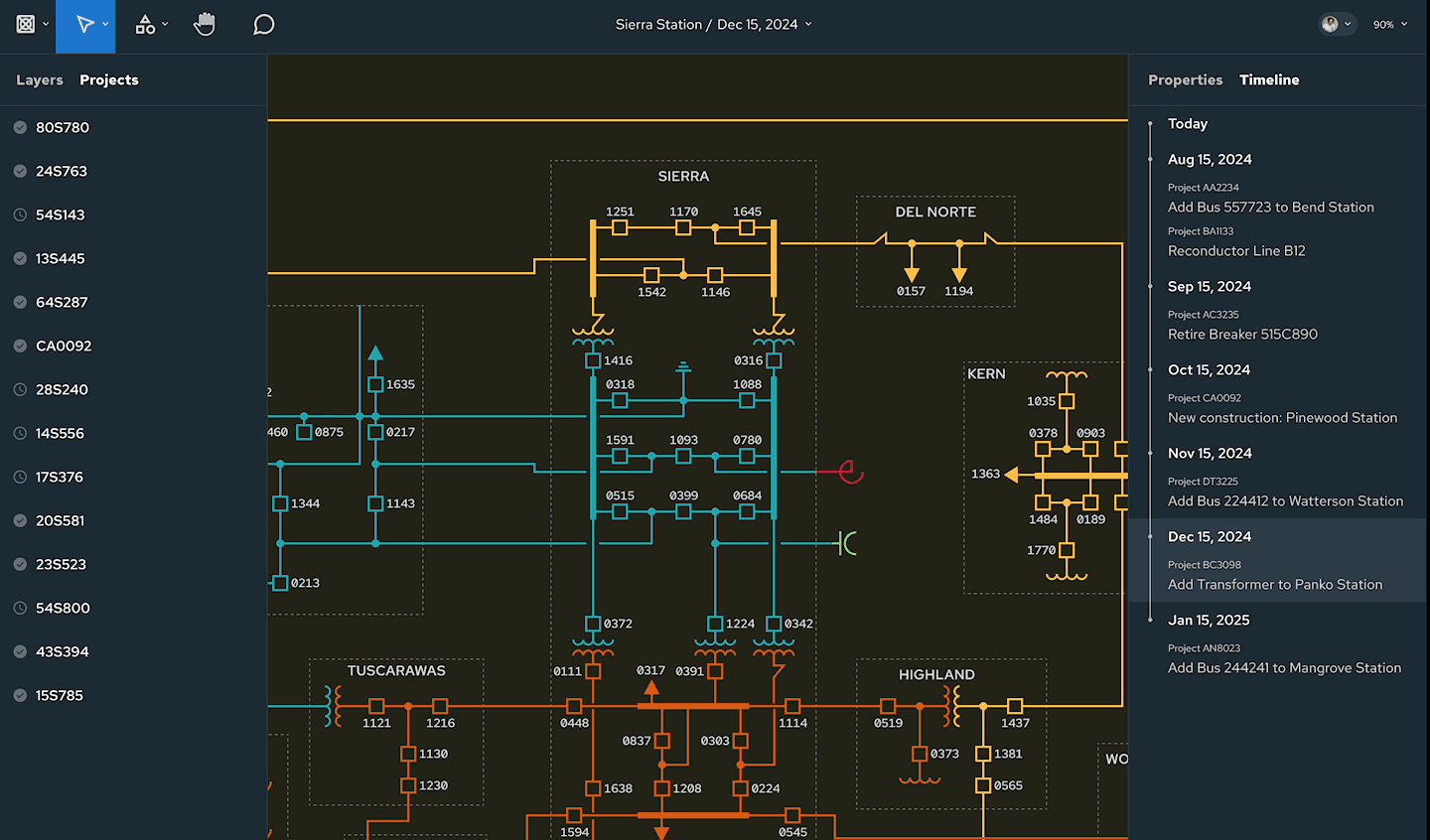
Similarly, you could get timeline based alerts when something changes upstream that causes new issues downstream. Instead of wading through error logs you could get a real-time notification describing the issues, click to view the point in time that is throwing the error, and see which elements are affected.
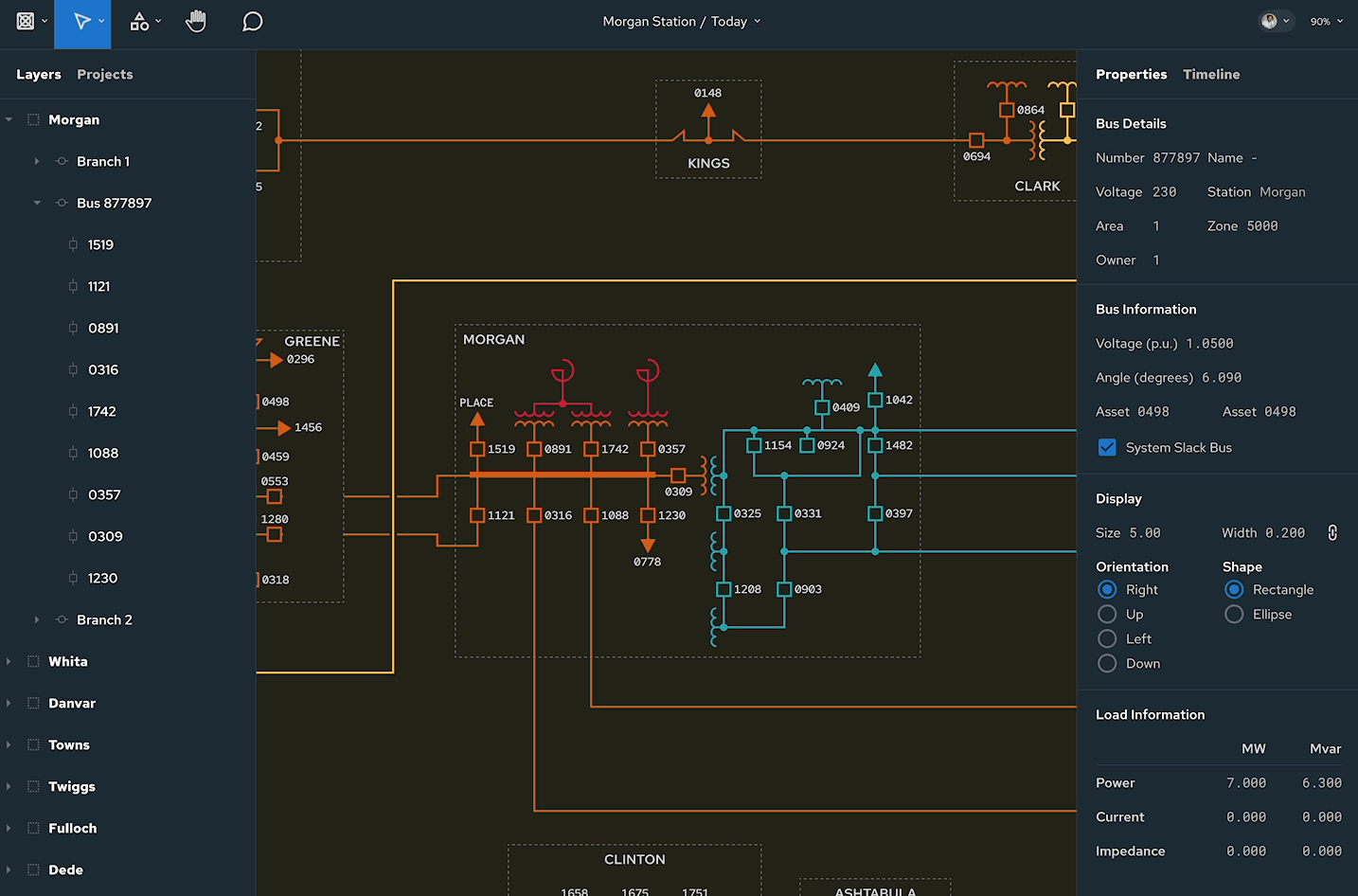
And of course, what would any modern software proposal be without a nod to AI. Beyond simply highlighting errors, why not use machine learning to provide suggestions of how to fix those errors?
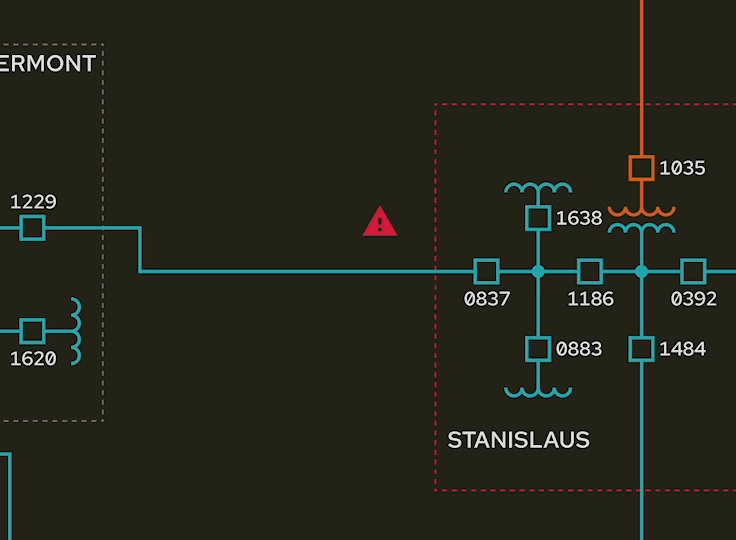
These are just a few ideas we’ve been experimenting with to bring human-centered design to power grid modeling software. We’re excited to keep pushing these ideas further and help make this work easier and help catch and resolve errors before they become serious problems.
Let us know what other modeling problems you’re having and how we can help you solve them!
Loved the article? Hated it? Didn’t even read it?
We’d love to hear from you.

